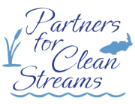 Algae is a normal and necessary component of Lake Erie’s aquatic food web. However, harmful algal blooms occur when algae grows out of control, producing negative effects for both wildlife and humans. What causes these events, and how can each of us be part of the solution?
Algae is a normal and necessary component of Lake Erie’s aquatic food web. However, harmful algal blooms occur when algae grows out of control, producing negative effects for both wildlife and humans. What causes these events, and how can each of us be part of the solution?
Algae is a microscopic plant. Its growth naturally increases in the warmer summer months. However, human impacts are enhancing the growth of certain strains of algae beyond ecologically healthy levels. These impacts include nutrient runoff, including the nutrients found in fertilizer and manure, as well as habitat alteration, such as the removal of natural wetlands and increased erosion near streams.
What’s the result of these impacts? They can cause the natural process of eutrophication to speed up. Eutrophication causes algae growth to explode. Algae typically have a very fast life cycle, and when this life cycle is accelerated even more, it causes problems for water quality and aquatic life, primarily by depleting oxygen from the water. This phenomenon, known as hypoxia, results in oxygen levels becoming so low that the water can no longer support aquatic life. At worst, the end result can be an ecological “dead zone” that does not support fish or their food webs.
Fortunately, our part of Lake Erie hasn’t yet experienced widespread hypoxia. Instead, algae’s main impact on our region is from beach closures and worries about water quality. You can use Beach Guard, a service provided by the Ohio Department of Health, to determine the safety status of swimming at Lake Erie beaches.
Although harmful algal blooms are a large-scale problem that are being addressed by large-scale actions, individuals can also play a part in the solution. We’ve been running a series on Water-Friendly Lawn Care (Part 1, Part 2) as well as the positive impact of reducing pet and waterfowl poo where you can learn more about steps to take. A little effort by individuals can go a long way when done collectively!
